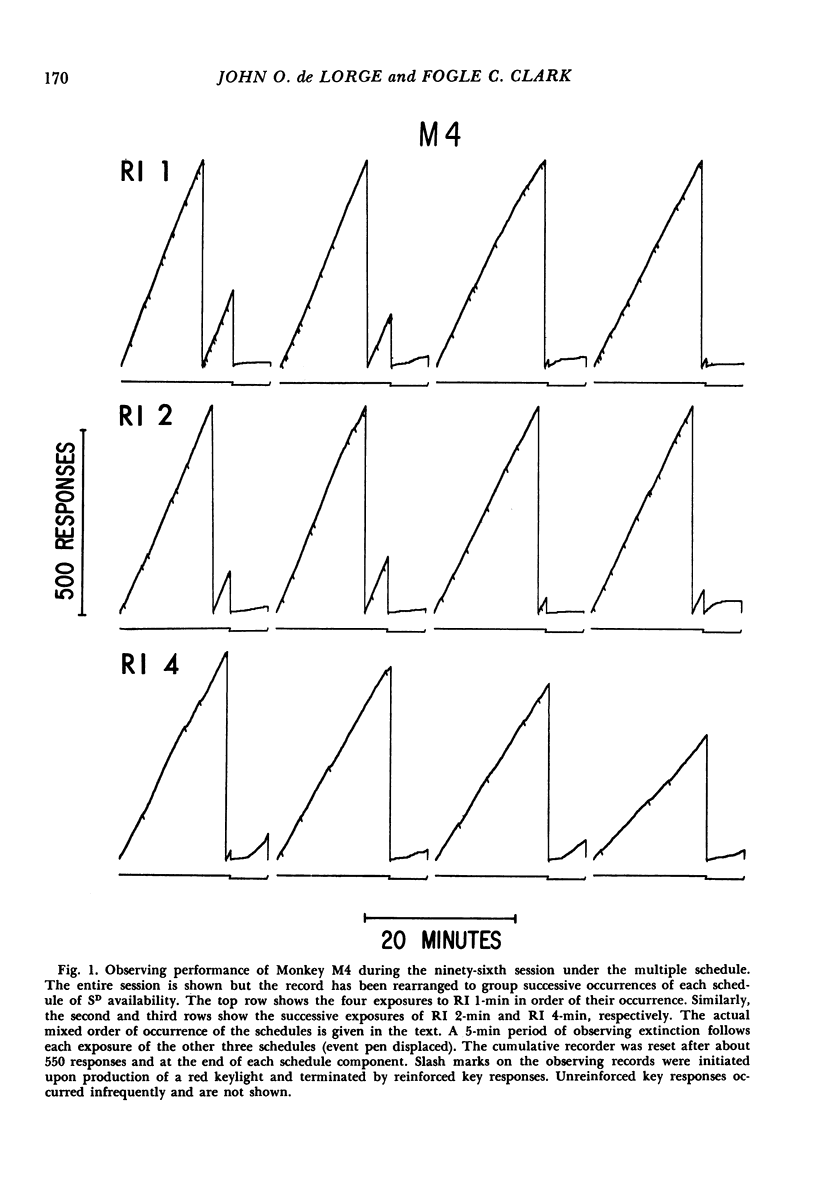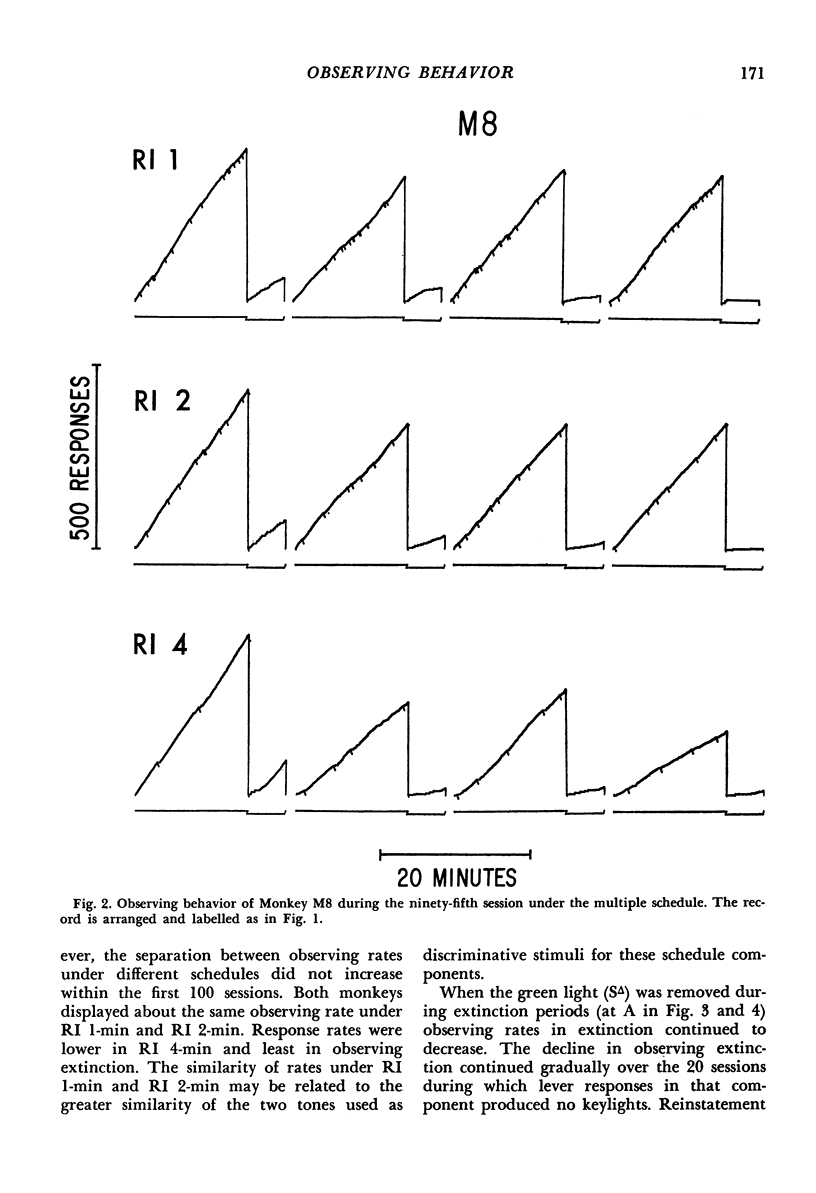Abstract
Observing behavior of two squirrel monkeys was examined under a multiple schedule of four components. Lever (observing) responses produced either a stimulus indicating the availability of food or another stimulus indicating food was not available. Key responses in the presence of the food-available stimulus produced food on a continuous reinforcement schedule. In the absence of food-available stimuli, responding on the key had no scheduled consequences. Observing responses produced food-available stimuli according to three different random-interval schedules with mean interstimulus availability times of 1, 2, and 4 min. In the fourth component of the multiple schedule (observing extinction) food-available stimuli never occurred. Each component of the schedule was correlated with a distinctive auditory stimulus. Observing rates decreased with decreasing frequency of the food-available stimulus. Observing rates during extinction continued decreasing when the brief stimulus indicating food unavailability was no longer produced by lever pressing. When the brief stimulus was reinstated response rates increased abruptly.
Full text
PDF








Selected References
These references are in PubMed. This may not be the complete list of references from this article.
- CLARK F. C., HULL L. D. THE GENERATION OF RANDOM INTERVAL SCHEDULES. J Exp Anal Behav. 1965 Mar;8:131–133. doi: 10.1901/jeab.1965.8-131. [DOI] [PMC free article] [PubMed] [Google Scholar]
- Catania A. C., Reynolds G. S. A quantitative analysis of the responding maintained by interval schedules of reinforcement. J Exp Anal Behav. 1968 May;11(3 Suppl):327–383. doi: 10.1901/jeab.1968.11-s327. [DOI] [PMC free article] [PubMed] [Google Scholar]
- Clark F. C. Effects of d-amphetamine on observing behavior in the squirrel monkey. J Exp Anal Behav. 1969 Nov;12(6):977–987. doi: 10.1901/jeab.1969.12-977. [DOI] [PMC free article] [PubMed] [Google Scholar]
- Clark F. C. The effect of deprivation and frequency of reinforcement on variable-interval responding. J Exp Anal Behav. 1958 Aug;1(3):221–228. doi: 10.1901/jeab.1958.1-221. [DOI] [PMC free article] [PubMed] [Google Scholar]
- De Lorge J. O., Hess J., Clark F. C. Observing behavior in the squirrel monkey in a situation analogous to human monitoring. Percept Mot Skills. 1967 Dec;25(3):745–767. doi: 10.2466/pms.1967.25.3.745. [DOI] [PubMed] [Google Scholar]
- FARMER J. PROPERTIES OF BEHAVIOR UNDER RANDOM INTERVAL REINFORCEMENT SCHEDULES. J Exp Anal Behav. 1963 Oct;6:607–616. doi: 10.1901/jeab.1963.6-607. [DOI] [PMC free article] [PubMed] [Google Scholar]
- HERRNSTEIN R. J. Relative and absolute strength of response as a function of frequency of reinforcement. J Exp Anal Behav. 1961 Jul;4:267–272. doi: 10.1901/jeab.1961.4-267. [DOI] [PMC free article] [PubMed] [Google Scholar]
- KELLEHER R. T., RIDDLE W. C., COOK L. Observing responses in pigeons. J Exp Anal Behav. 1962 Jan;5:3–13. doi: 10.1901/jeab.1962.5-3. [DOI] [PMC free article] [PubMed] [Google Scholar]
- doi: 10.1901/jeab.1970.14-361. [DOI] [PMC free article] [Google Scholar]


